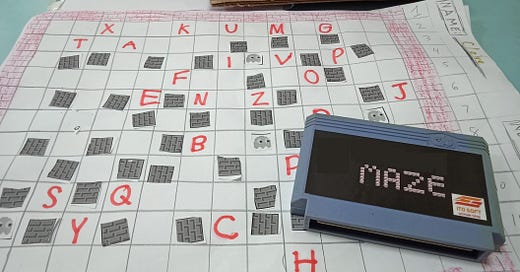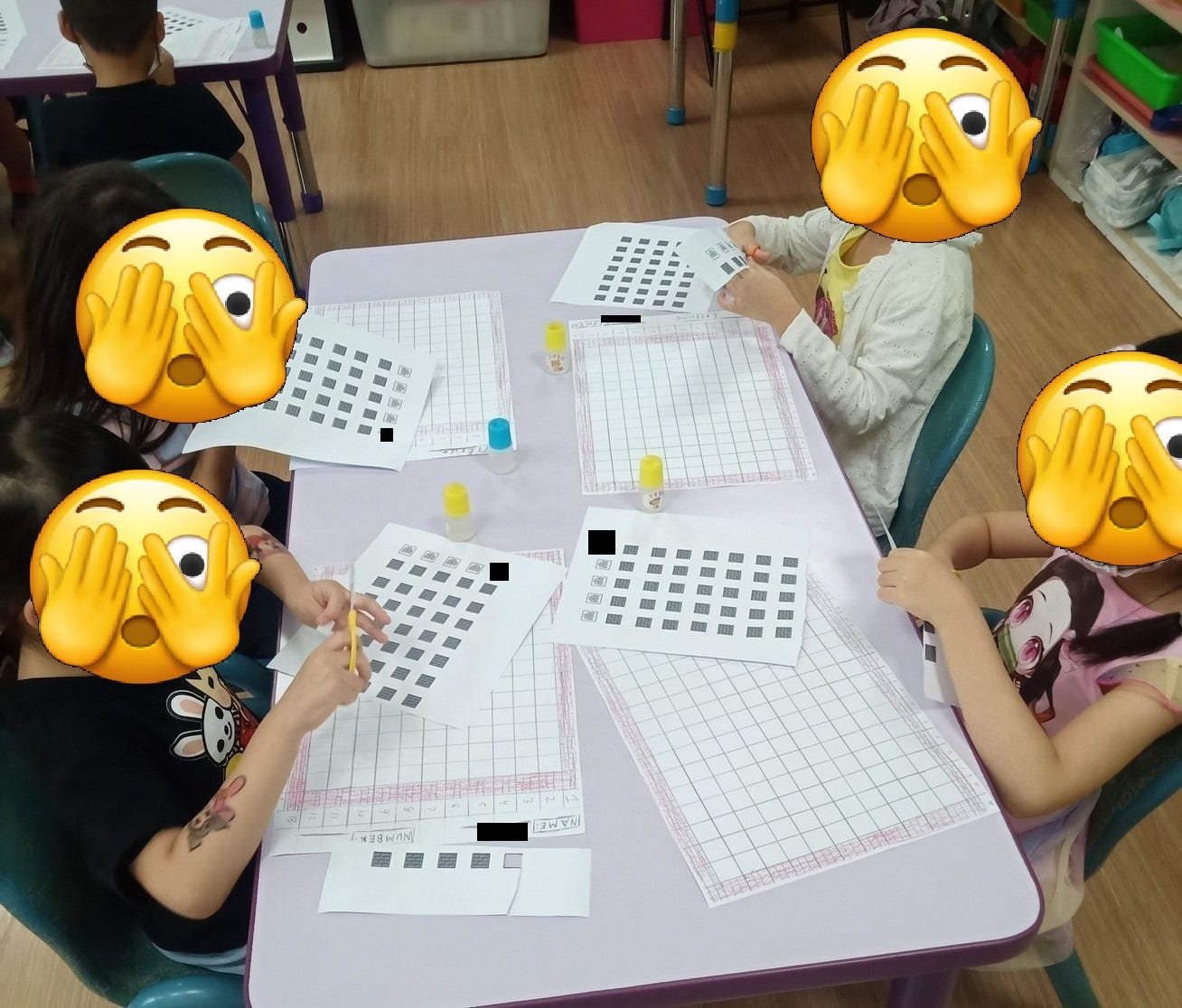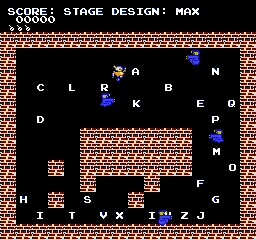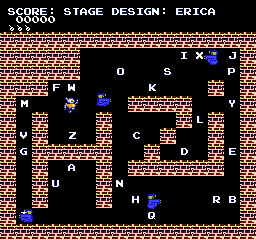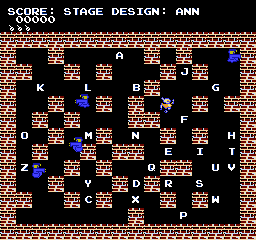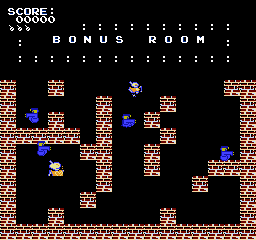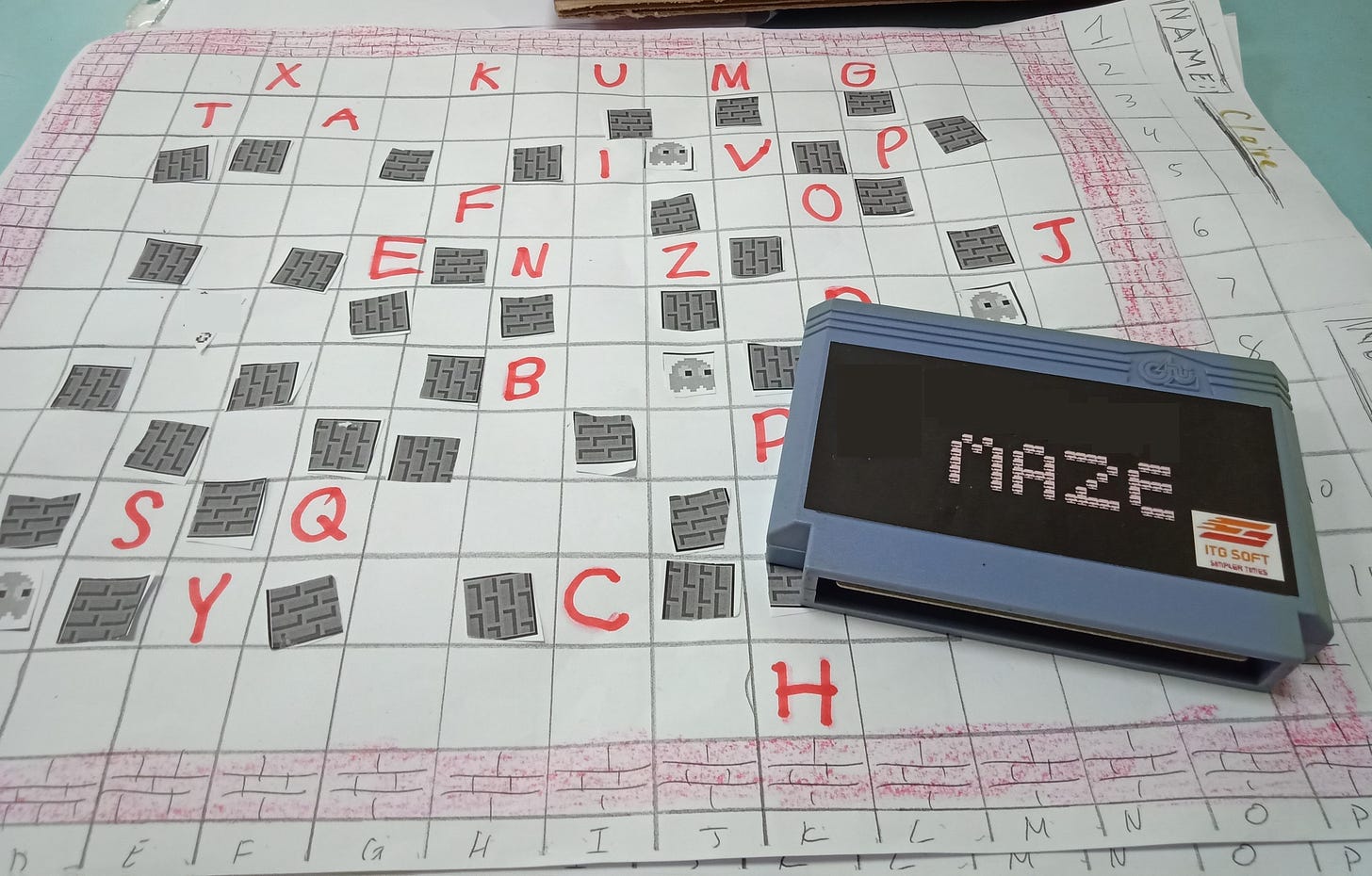Maze was conceptualized about one week before the second to last weekend in September. For those fortunate enough to be uninitiated, Taiwan has this nasty little concept of “make-up” working days. Simply put, if a public holiday falls on a Tuesday or a Thursday, the government will also give workers the adjacent day off (i.e. Monday or Friday), thus linking the holiday to a weekend; however, the extended weekend doesn’t come for free, and some other day before the holiday one must then work on a Saturday to make up for the extra day that the government gives. While the longer holidays are fun, working six days a week with only a day off is a struggle, especially as I’ve gotten older. Furthermore, in my industry of teaching, many parents opt not to take their children to class on the make-up days, so what is a teacher expected to do with half or a third of his or her class absent? Needless to say, tensions are high, and attitudes are bitter during these make-up days, hence I decided to prepare something a bit more fun for my class.
I’d reckon that about half of my class play electronic games of some sort. For reference, my students are around five to six years old, and will be leaving kindergarten and heading to elementary school next fall. As someone who has been gaming since he was the old age of three years old, I find it hard to comprehend that some children aren’t playing electronic games by the age of five or six, though I realize that in today’s world, there is a lot of concern towards too much stimulation, too much screen time, etc. That being said, I do have some gamers in my class, and for those who haven’t necessarily played an actual game, those students are still quite familiar with the Mario characters, Pikachu, Sonic the Hedgehog, and other popular franchises.
One problem that I figured I would have would be to teach students the basics of designing the stage for a video game, when some of the children never even played a TV game! After much consideration, I settled on designing a maze game somewhat reminiscent of Pac-Man, as I figured the simplicity made it more user-friendly for my students, and surely the little rabid eating fiend is still somewhat relevant, right? Time would tell.
As Saturday rolled around, the stakes were increased somewhat, as I found out that my colleague had taken the day off; therefore, my supervisor would be accompanying me in the classroom for the majority of the morning. Despite feeling somewhat nervous as to how my supervisor would feel about this extravagant art project, I decided to roll with it and soon began explaining to the students some of the various key points for game stage design. We then watched a quick gameplay video of Pac-Man, which about half of the students had recognized, before getting to work constructing our stages.
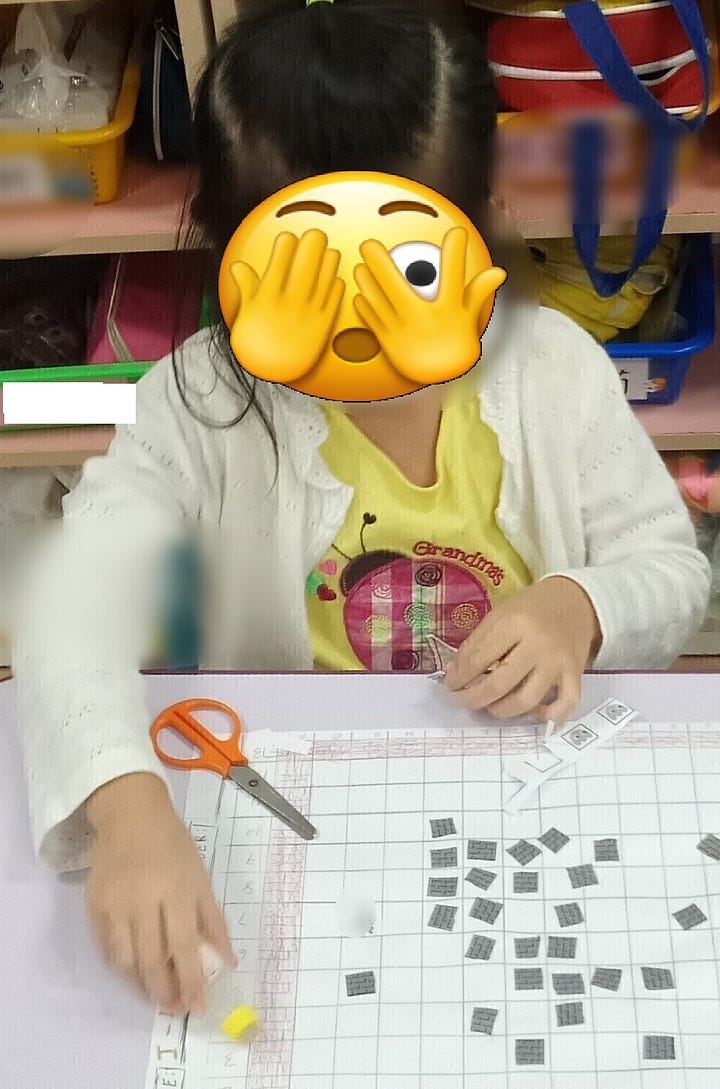

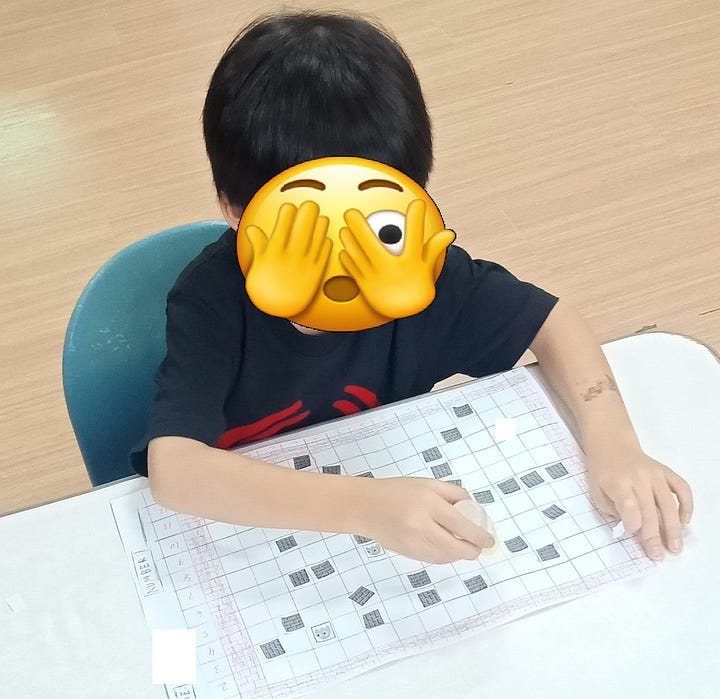
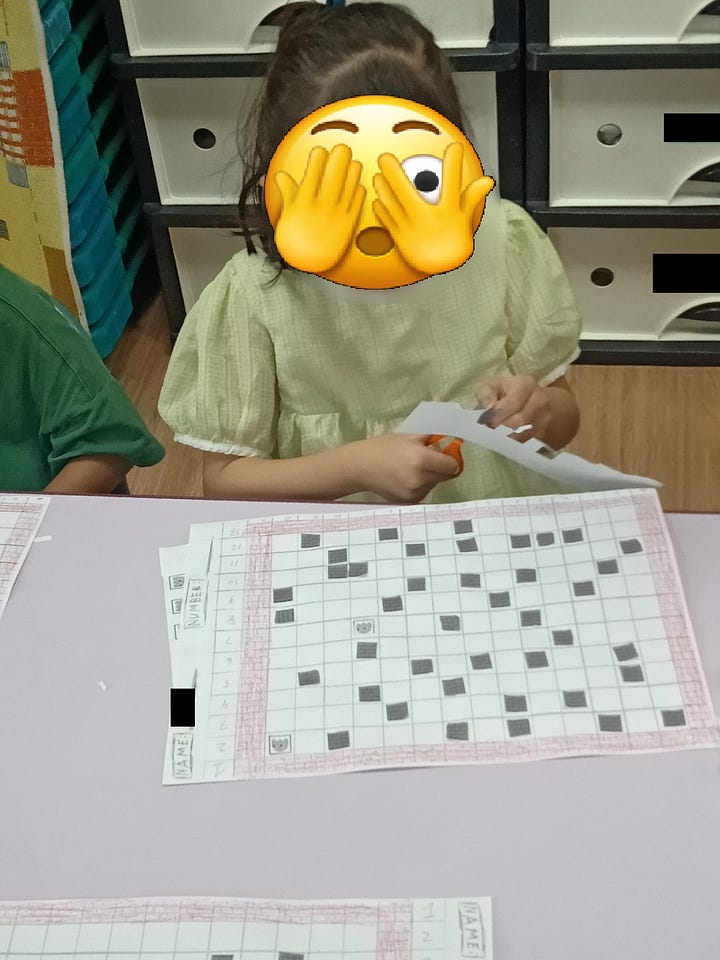
The creation of Maze wasn’t just an elaborate art project – it was also an exercise in following instructions. At this, I feel quite impressed, as none of my students messed up their stages, despite attempting to follow instructions in a foreign language, at six years old. I explained to the students that the character couldn’t go through the brick walls and demonstrated it by showing them how we can’t stick our hands through a brick, which I randomly have sitting at my desk as a bookend. Moments later one could hear the snip, snip, snippy snap of scissors as my students diligently began cutting out the forty different brick pieces I gave them, before pasting them into the squares of their choosing. Some of the students opted to spread the bricks out over the whole map, whereas other children decided to group all of the bricks in one area, effectively reducing the size of the playing field. While some of the designs admittedly gave me a chuckle, I didn’t speak anything aside from words of encouragement, and let my students have the freedom to place the walls however they desired.
It took a lot of time and effort for my students to paste all of the brick tiles onto the boards that I had provided. After this, I had the students add four ghosts. I told them to spread the ghosts out in roughly four different areas, so that they could guard a larger portion of the stage. Finally, the children excitedly placed the robot protagonist, which was based on the logo of the school, on the board. I told the students not to place the robot directly next to any of the ghosts, and asked my students if they knew why. A few of the children excitedly explained that the ghosts would easily kill the robot if we did this. Bingo!
After the stage design was finished, and the characters were placed, we still had one thing left to do. We went through the English alphabet, letter by letter, and each child wrote each letter in one of the remaining empty squares. These letters would be collectibles, providing the player with points as opposed to the pellets in the original Pac-Man game. By the time we added this final finishing touch, it was just about lunchtime, and the children would be involved in other activities that afternoon. We finished up in the nick of time!
From this point forward, I would work on getting the game from paper to cartridge. I chose to use the NES Maker program as the base. During my free time, I would often sit at my desk and implement the stages or create graphics, while my students were on break. Although it would be playtime for them, many would often come over to watch the game as it went from paper to computer, excitedly recognizing their own stages come to life.
I decided to add each child’s name in the HUD area of the stage that he or she designed, so that each student could receive the recognition that he or she deserved. Some of the stages had some minor design issues. In one stage, for example, the hero was confined to a small corner of the screen, blocked off from the rest of the stage. In other stages, letters might be unobtainable. To address these issues, I made some of the walls secret passageways. Otherwise, I tried to keep the stages just as how my students had designed them, as I didn’t want to take away from their project.
Towards the end of the project, I decided that I wanted to replace the ghosts, which were styled similarly to those in Pac-Man, to the hopping vampires of Chinese lore. This decision came about as I wanted to make the game slightly more unique, though I also felt that the vampires might be a bit more culturally appropriate for a Taiwanese game.
After some testing of the game, it would then be time to burn the ROM onto cartridges. I made a copy of Maze for myself. I also assembled one and gave it to my supervisor, along with a sheet of paper detailing the history and creation of the game as well as the control scheme for the game.
Although simple in nature, this project was quite well-received. It helped reinforce the remembrance of the English alphabet in the minds of young learners, and they were also able to practice following instructions and making their ideas fit into the constraints of certain parameters. The project was exciting for the students, and it was a way for adults and children to relate with each other, via the commonality of old games. As I begin transitioning from educator to another career path, I am glad that I now have the freedom to provide my final class of students with some memorable projects that will hopefully inspire and motivate them to follow their dreams in life. Although the first step might often feel impossible, even worn paths are traversable.

